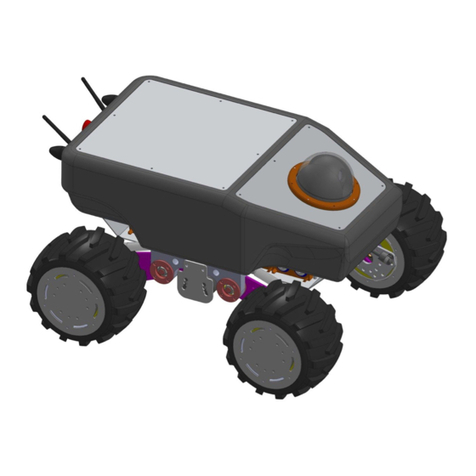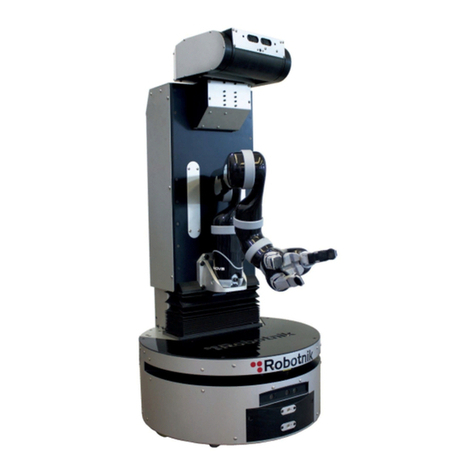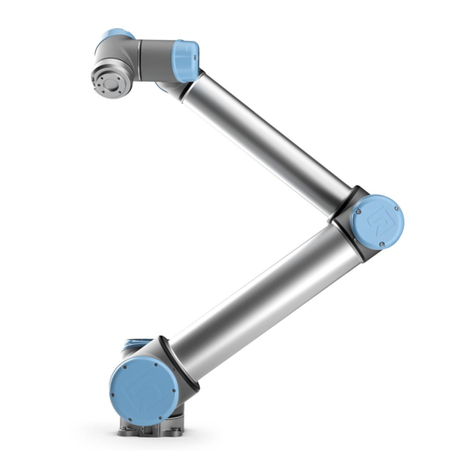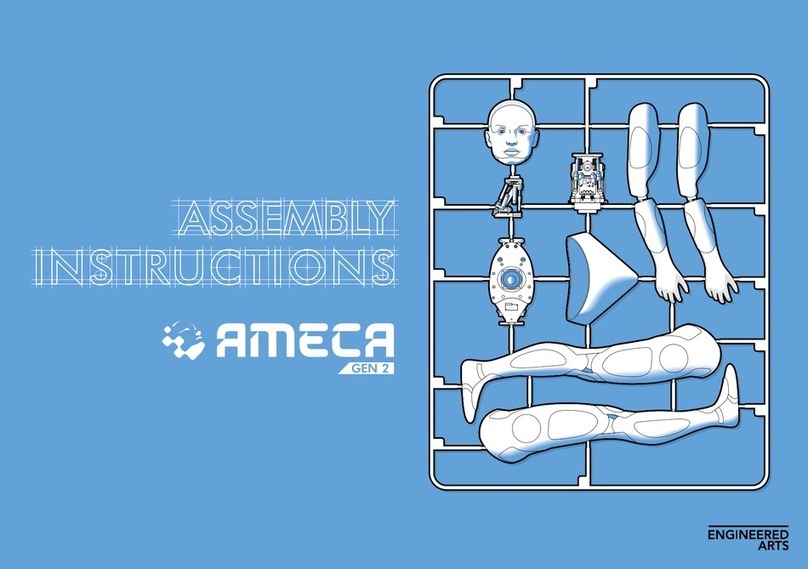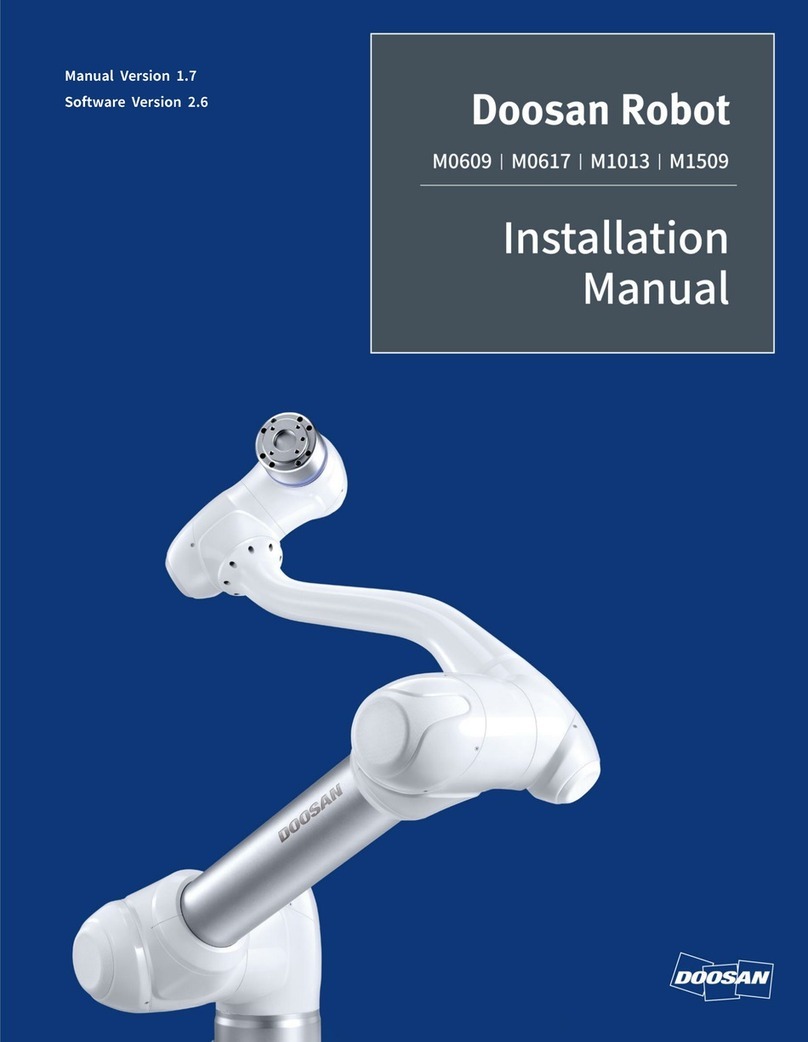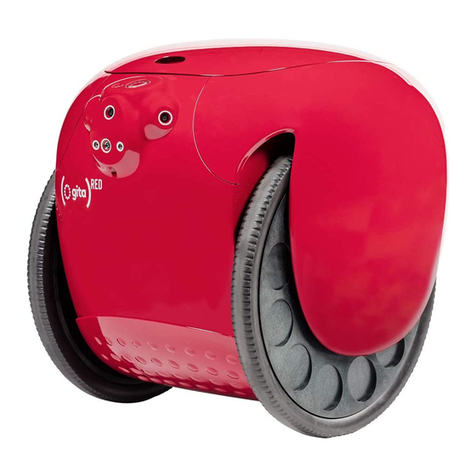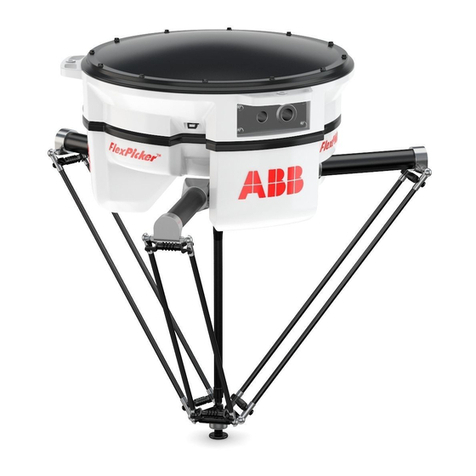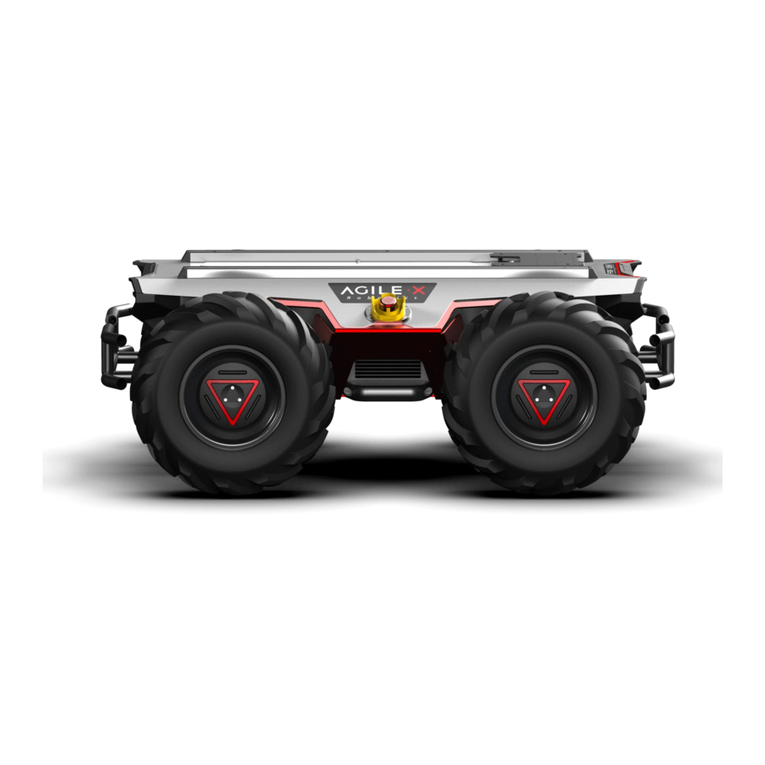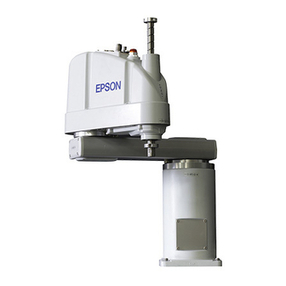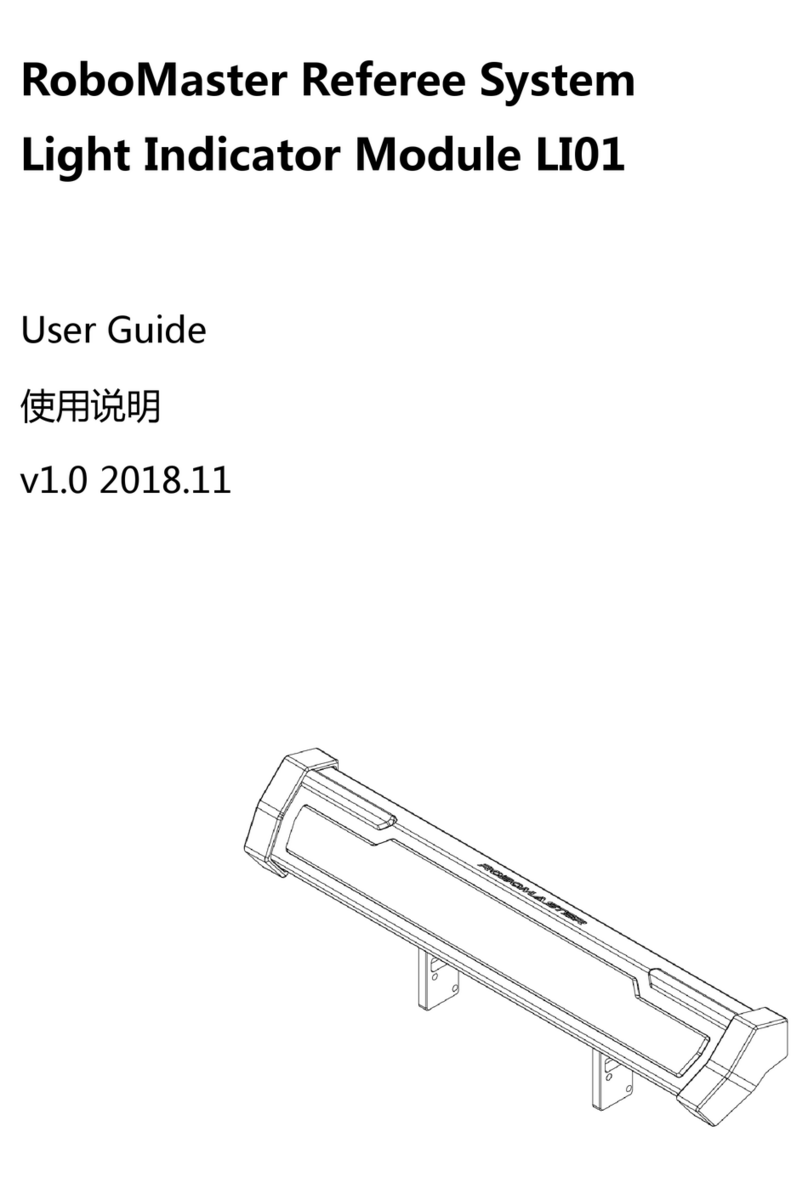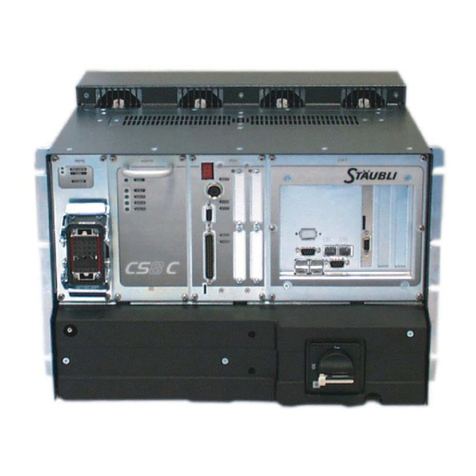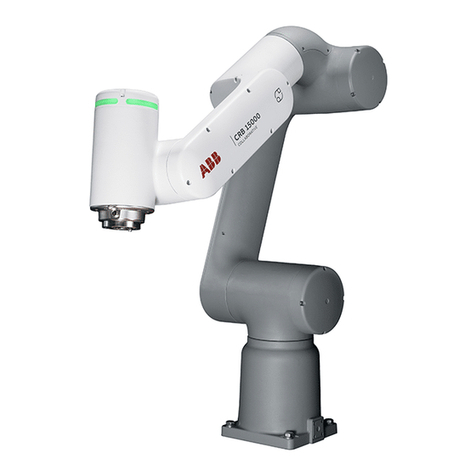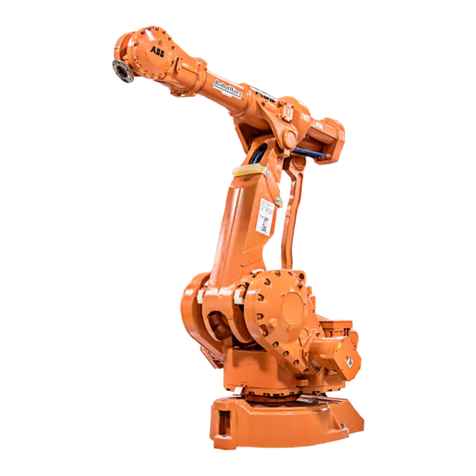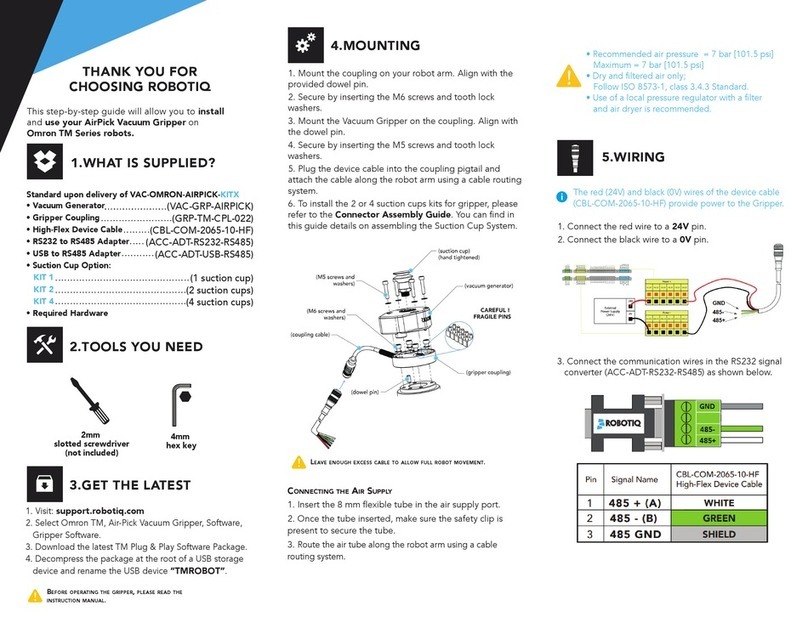Robotnik RB-1 User manual

RB-1 MODULAR MOBILE MANIPULATOR
Hardware Manual
Version 1.0
RBTNK-DOC-161020
Robotnik Automation, S.L.L.

RBTNK-DOC-161020
Hardware Manual.
RB-1 Modular Mobile Manipulator
INDEX
1 Introduction
2 Robot description
2.1 General overview
2.2 Components description
2.2.1 Wheels
2.2.2 Motor Driver
2.2.3 Electrical components
2.2.3.1 DC-DC
2.2.3.2 Fuses & terminal
2.2.4 Control components
2.2.4.1 Embbeded PC
2.2.4.2 Wireless Router
2.2.5 Sensors
2.2.5.1 Pixhawk
2.2.5.2 Orbbec
2.2.5.3 Hokuyo
2.3 Controllers
2.3.1 Control Panel
2.3.2 Gamepad
2.4 Battery
2.4.1 Battery Pack
2.4.2 LiFePo4 Cell
2.4.3 Protection circuit module
2.5 Charger
3 Accessibility
3.1 Base
3.2 Electronic box
3.3 Torso
3.4 Head
3.5 Battery
4 Connectivity.
2

RBTNK-DOC-161020
Hardware Manual.
RB-1 Modular Mobile Manipulator
1 Introduction
This Manual describes the main parts of the RB-1 modular mobile
manipulator, as well as how to access to the internal components.
Every main piece includes a little description, emphasizing the elements
that need a special periodical control and maintenance.
Also is inclueded how every compoennt is connected with a diagram.
Finally, a maintenance table and the basic drawings of the vehicle has
been included.
2 Robot description
2.1 General overview
The next pictures shows the front view of the robot with the location of
the main parts.
Figure 1 – Front view of RB-1 robot
●Pan-Tilt Head: The head has a Pan tilt movement provided by two
dynamixel pro motors. It include one Orbbec camera. Inside the head is
installed the microphone and the speaker.
●Torso:
The torso of the robot has elevation movement. It has a range of
400 mm. The movement is provided by one dynamixel pro motor.
4

RBTNK-DOC-161020
Hardware Manual.
RB-1 Modular Mobile Manipulator
●MICO or JACO arm: The RB-1 can incorporate a MICO or JACO arm
from Kinova.
●Laser location: Place inside the robot where is possible to install the
compatible laser rangefinder describe in the section 2.2.4.1.
●Base Orbeec: The Orbeec camera is installed standard on the robot.
This camera is used for charging in the automatic charger base.
● Front cover: Can be removed to access to the electrical box
connections, the motors, the laser and the Orbecc camera.
●Battery cover:
Can be removed to access to the battery pack.
The next pictures shows the rear view of the robot with the location of
the main parts.
Figure 2 – Rear view of RB-1 robot
●Torso back cover: Can be removed to access to the internal
components placed on the torso back.
●Head covers: Can be removed to access to the head motors and the
Orbecc.
●Base back cover:
Can be remove to acces to the robot motors.
●Control panel: It include the general power switch, the restart button,
the cpu start button, the emergency stop, the antennas, the manual
charger connector, external access to the computer and the location of
the fuses.
5

RBTNK-DOC-161020
Hardware Manual.
RB-1 Modular Mobile Manipulator
2.2 Components description
This section describes the components included in the RB-1 modular
mobile manipulator.
2.2.1 Wheels
The robot has two motor wheels and three omniwheels as it’s shown in
the next picture:
Figure 3 – Wheels location
The motor wheel is composed by a motor block and a detachable
wheel. The motor block has a 250w 8 poles brushless motor with Hall Effect
sensor, an encoder and a reduction gear box, all hold by an aluminum cover.
These kinds of motors have a much longer life expectancy and a higher
efficiency than brushed motors.
Figure 4 – Motor wheels
6

RBTNK-DOC-161020
Hardware Manual.
RB-1 Modular Mobile Manipulator
The omni wheels gives stability to the platform and permits the turning
around the center of the robot.
2.2.2 Motor Driver
The motor drivers are two DZCANTE 020L080 with a connection board
on top.
Figure 5 – Motor Driver
The drivers are programmed at Robotnik with specific a settings for
each motor. The serial identifier is the default one (63), but each driver has its
own CAN bus identifier (1 and 2). DO NOT change them from one motor to
another.
There are several analog and digital input/outputs available in each
driver, check driver datasheet for more information.
2.2.3 Electrical components
2.2.3.1 DC-DC
There is a 150W 12V DC/DC in the electronic box to provide a stable
power supply for the electronic elements, for example the computer.
Figure 6- 12V DC/DC
There is a 150W 24V DC/DC in the torso to provide a stable power
supply for the dynamixel motors and the arm.
Figure 7- 24V DC/DC
7

RBTNK-DOC-161020
Hardware Manual.
RB-1 Modular Mobile Manipulator
There is a small 5V DC/DC in the electronic box to power the control
circuit of the motor drivers, the router and the USB hub.
Figure 8- 5V DC/DC
2.2.3.2 Fuses & terminal
The fuses terminal is accessible from the outside of the electronic box.
Is located in the control panel on the right side.
Figure 9- Fuses
The fuses are numbered from left to right.
ID
Ampers
Description
F1
15
Back panel charge connector & switch S1
F2
30
Main power protection
F3
15
Driver 1
F4
15
Driver 2
F5
10
Controle circuit protection
F6
15
Torso & arm power protection
F7
10
12V DC/DC converter protection
F8
3
5V DC/DC Converter protection
Table 1 – Fuses
8

RBTNK-DOC-161020
Hardware Manual.
RB-1 Modular Mobile Manipulator
The robot has two terminals inside, one is in the electronic box and the
other is in the torso.
The next picture shows where is located the terminal inside the
electronic box. The terminal distributes the power to all the components of the
electronic box.
Figure 10- Electronic box terminal location
The next picture shows where is located the terminal inside the torso.
The terminal distributes the power to all the components of the torso and the
motors of the head.
Figure 11- Torso terminal location
9

RBTNK-DOC-161020
Hardware Manual.
RB-1 Modular Mobile Manipulator
2.2.4 Control components
2.2.4.1 Embbeded PC
The embbeded PC is located inside the electronic box.
The main board is an Intel NUC BOXNUC5i7RYH.The computer is
completed with 8GB of RAM and a M.2 HDD.
Figure 12 – PC board
For more information go to:
http://www.intel.com/content/www/us/en/nuc/nuc-kit-nuc5i7ryh.html
The embedded Linux PC is located inside the electronic box, under
the N Wireless Router. Its maintenance is equivalent to a standard PC
station.
The main problem can be due to the accumulation of dust in the
internal components, so it acts as thermal insulator. The heat generated by
the components cannot be well dissipated because it is trapped in the dust
layer.
The oil and grease particles contained in the environmental air mix
with the dust, creating thus a big insulation layer that reflexes the heat to
other components. This effect causes a reduction of the system useful life.
On the other hand, the dust contain conductive particles that can generate
short-circuits throughout the circuit boards or the peripheral cards.
The best way to extend the life of the equipment and make it free of
reparations for many years is to clean it and remove the dust frequently.
10

RBTNK-DOC-161020
Hardware Manual.
RB-1 Modular Mobile Manipulator
2.2.4.2 Wireless Router
The wireless router is located inside the electronic box.
Figure 13– ASUS RT-N12
The huge 9dB antennas are changed with smaller 5dB antennas
Technical Specification
● Wireless Data Transfer Rate: 802.11n: 300Mbps
● Supports router, access point & range extender modes
● Port triggering for special applications
● DDNS and SIP•Guest network
● Virtual server and DMZ hosting
● MAC/IP filter and URL blocking
● Static routing
● UPnP architecture
● VPN pass-through (IPSec/PPTP)
● Wi-Fi schedule control
11

RBTNK-DOC-161020
Hardware Manual.
RB-1 Modular Mobile Manipulator
2.2.5 Sensors
2.2.5.1 Pixhawk
The Pixhawk is located inside the electronic box. It is used as an IMU
(Inertial Measurement Unit) to better estimate the robot position, using the
Pixhawk integrated gyroscope and accelerometers.
Figure 14 - Pixhawk FCU
Key Features:
● 168 MHz / 252 MIPS Cortex-M4F
● 14 PWM / Servo outputs (8 with failsafe and manual override, 6
auxiliary, high-power compatible)
● Abundant connectivity options for additional peripherals (UART, I2C,
CAN)
● Integrated backup system for in-flight recovery and manual override
with dedicated processor and stand-alone power supply (fixed-wing
use)
● Backup system integrates mixing, providing consistent autopilot and
manual override mixing modes (fixed wing use)
● Redundant power supply inputs and automatic failover
● External safety switch
● Multicolor LED main visual indicator
● High-power, multi-tone piezo audio indicator
● microSD card for high-rate logging over extended periods of time
Pixhawk is connected to the PC using a FTDI_USB-to-UART cable on
the TELEM2 port.
More info in https://pixhawk.org/modules/pixhawk
12

RBTNK-DOC-161020
Hardware Manual.
RB-1 Modular Mobile Manipulator
2.2.5.2 Orbbec
The Orbbec is located in the front of the base and also in the head of
the robot. The Astra 3D cameras are excellent for a wide range of scenarios,
including gesture control, robotics, 3D scanning, and point cloud development.
Figure 15 - Pixhawk FCU
Key Features:
● Power: 5V (USB 2.0)
● Range: 0.4 - 8 m
● Depth image size: 640*480 (VGA) 16bit @ 30FPS
● RGB image size: 1280*960 @ 10FPS
● Data interface: USB 2.0
● Microphones: 2
●Weigth: 300 g
2.2.5.3 Hokuyo
The robot can be equipped with several models. It will be located in the
front side of the base Below you can see the standard laser range finders
mounted.
URG-04LX-UG01
Indoor Environment
Wide Angle: 240º
Angular resolution: 0.36º
Scanning time: 100 ms
Measuring area: 20 to 5600mm
Accuracy: 60 to 1000mm : ±30mm; 1000
to 4095mm : ±3% of measurement
Interface: USB
13

RBTNK-DOC-161020
Hardware Manual.
RB-1 Modular Mobile Manipulator
URG-04LX
Indoor Environment
Wide Angle: 240°
Angular resolution: 0.36º
Scanning time: 100 ms
Measuring area: 20 to 4095mm
Accuracy:60 to 1000mm : ±10mm; 1000 to
4095mm : 1% of measurement
Interface: USB, RS232
UST-10LX
Outdoor Environment
Wide Angle: 270°
Angular resolution: 0.25º
Scanning time: 25 ms
Measuring area: 0.06m to 10m
Accuracy: ±40mm
Interface: Ethernet
UST-20LX
Outdoor Environment
Wide Angle: 270°
Angular resolution: 0.25º
Scanning time: 25 ms
Measuring area: 0.06m to 20m
Accuracy: ±40mm
Interface: Ethernet
Table 2 – Laser Range Finders
14

RBTNK-DOC-161020
Hardware Manual.
RB-1 Modular Mobile Manipulator
2.3 Controllers
This section describes where are the controlers of the robot.
2.3.1 Control Panel
The robot presents in its back several buttons, indicators and
connectors:
Figure 16 - Control panel
-EMERGENCY STOP: disables the drivers and stop the robot, the
torso and head movement and arm power.
-RESTART button: restart the power of all the motors and the arm. It
has a orange light indicator.
- General ON/OFF key (S1): cuts the power of the whole robot. It has a
green light indicator.
-CPU power blue indicator/switch: turns on and off the computer
-CHARGER: to connect the provided battery charger
- Two free USB 2.0 ports
- Two Ethernet ports (WAN ansd LAN port)
-HDMI port.
- Wi-Fi antennas
- FUSES access
15

RBTNK-DOC-161020
Hardware Manual.
RB-1 Modular Mobile Manipulator
2.3.2 Gamepad
The Gamepad used for the manual movements of the robot RB-1 is a
Bluetooth Joystick. The NUC board has an internal bluetooth receiver.
The two joysticks are used for direction, traction and elevation and there
are important controls like the speed level buttons that select between five
speed ranges: very slow, slow, medium, high, and very high
Figure 17 – DUALSHOCK controller
All functions are fully explained in the section Start-up of the software
manual
16

RBTNK-DOC-161020
Hardware Manual.
RB-1 Modular Mobile Manipulator
2.4 Battery
The robot receives the power supply from a LiFePO4 battery pack. It is
composed of sixteen 3.2V LiFePO4 cells and a protection circuit module. With
this set of batteries the robot is able to operate up to 10 hours or more,
depending on the robot movements.
The robot circuit is powered when the general switch S1 is ON. The
control DC/DC converter, that makes power to the different devices of control,
is powered at the same time.
The batteries are connected to the robot through the fuses. For
charging the batteries there is a connector at the back panel of the robot
where the charger can be connected. It is a direct connection, so the general
ON/OFF switch doesn’t affect the charging. It is possible to charge the robot
and keep working at the same time without any problem.
There is a 15A fuse (F0) between the connector and the batteries for
safety. This fuse is on the electronic box.
Also there are two plates in the front of the battery to connect to the
automatic charging station.
Figure 18- Plates for automatic charge
17

RBTNK-DOC-161020
Hardware Manual.
RB-1 Modular Mobile Manipulator
There is a 20A fuse (F00) between the plates and the batteries for
safety. This fuse is inside the battery pack..
Figure 19- Fuse F00 location
Full charging time is around 45-60 minutes for the supplied charger. Do
not use other chargers without checking battery specifications.
2.4.1 Battery Pack
Figure 20– Battery Pack
The battery pack is composed of sixteen LiFePO4 cells and a
protection circuit module. The whole package is protected with shrinkable
tube.
The batteries must be kept clean and dry in order to avoid escape
currents. Check the wear out of the battery wires to prevent short circuits.
The battery can be separated from the robot by taking out the battery
cover and unplugging the power supply connector..
18

RBTNK-DOC-161020
Hardware Manual.
RB-1 Modular Mobile Manipulator
Figure 21– Power supply connector from the Battery Pack
IMPORTANT: Recharge the batteries ASAP if fully discharged. Keeping
the voltage low for a long time will greatly reduce the lifecycles.
2.4.2 LiFePo4 Cell
Figure 22 LiFePo4 cell
Specifications:
● Normal capacity 15000mAh
● Normal voltage 3.2V
● Inter impedance <8mOhms
● Maximum continuous Discharge Current 10C(150A)
● Charging Temperature: -10 – 45ºC (14 – 113º F)
● Discharging Temperature: - 20 – 60ºC (14 – 140ºF)
● Cycle Performance: >2000 (80% of initial capacity at 1C rate)
● Standard Charging current: 1C (15A), Max. 5C (75A)
● Weight: 500g
19

RBTNK-DOC-161020
Hardware Manual.
RB-1 Modular Mobile Manipulator
2.4.3 Protection circuit module
Figure 23– Protection circuit module
24V BMS 8CELLS 30A
Item
8seriesbalancingguardshield
Overchargeprotection(V)
3.95±0.025
Overchargerecovery(V)
3.80±0.05
Overdischargevoltage(V)
2.2±0.1
Overdischargerecovery(V)
Cutloadorcharge
Normalworkingcurrent(A)
30
Overcurrentprotection(A)
60
Internalresistance(m/ohm)
<30
Chargingbalancingcurrent(mA)
60
Chargingbalancingvoltage(V)
3.63±0.03
Overchargepostponetime(mS)
1.2
Overdischargepostponetime(mS)
144
Temperatureprotection(ºC)
65ºC(option)
Temperaturecharacteristic
±1.0mv/ºC
Workingtemperature(ºC)
-10~+60
Storagetemperature(ºC)
-30~+85
Powerloss(uA)
<400(Vn=3.2vnormal)
<200(Vn=2.2vUnder-voltage)
Table 3 – Battery pack characteristics
20
Other manuals for RB-1
1
Table of contents
Other Robotnik Robotics manuals

